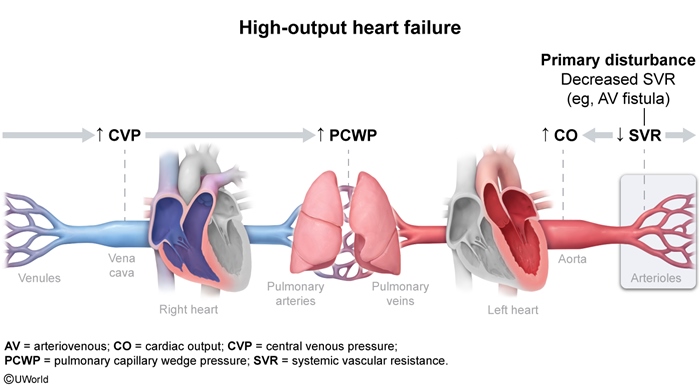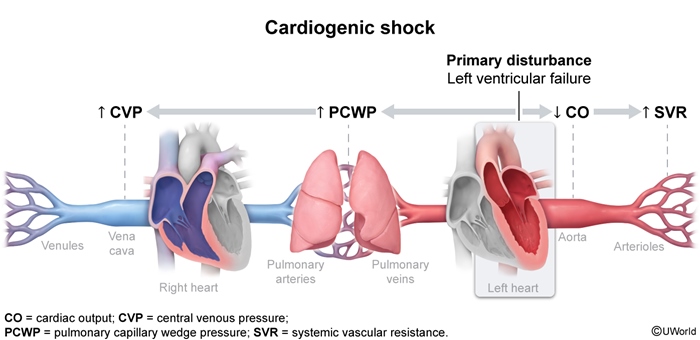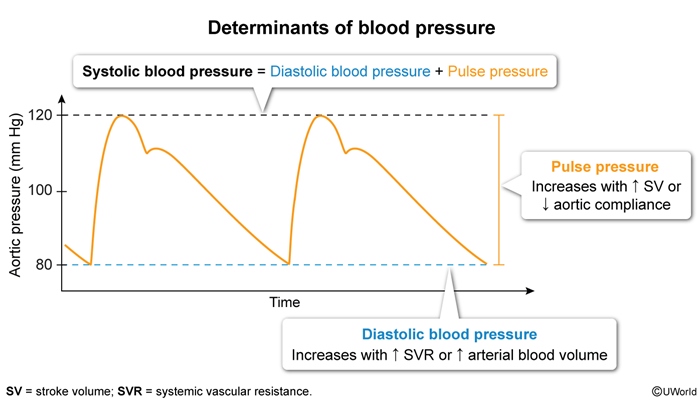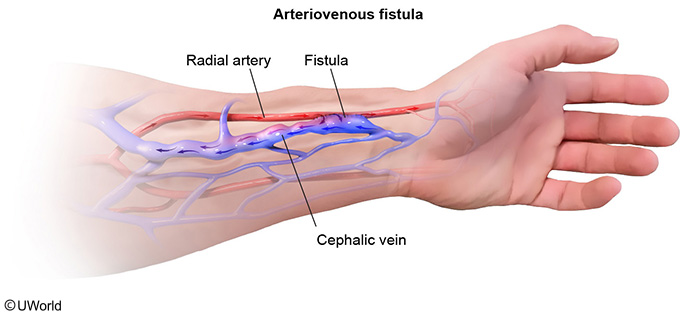High-Output Heart Failure
Article Sections
Introduction
High-output heart failure (HoHF) is an uncommon type of heart failure characterized by signs and symptoms of heart failure (eg, elevated cardiac filling pressures, peripheral edema, pulmonary edema) despite elevated cardiac output, unlike other forms of heart failure in which cardiac output is decreased. The primary disturbance in HoHF is a reduction in systemic vascular resistance (SVR), which leads to a reflexive increase in cardiac output (Figure 1). With most other types of heart failure, the primary disturbance is left ventricular (LV) dysfunction leading to a reduction in cardiac output and a reflexive increase in SVR (Figure 2). The reduction in SVR that leads to HoHF can be due to a number of different mechanisms.
Pathophysiology
HoHF results from a disturbance that decreases SVR. The low SVR leads to reduced blood pressure, and, in response, the left ventricle increases cardiac contractility and stroke volume to maintain adequate cardiac output for organ and tissue perfusion. Heart rate is also increased to aid cardiac output. The increase in stroke volume is responsible for characteristic findings of
Continue Learning with UWorld
Get the full High-Output Heart Failure article plus rich visuals, real-world cases, and in-depth insights from medical experts, all available through the UWorld Medical Library.
Figures



